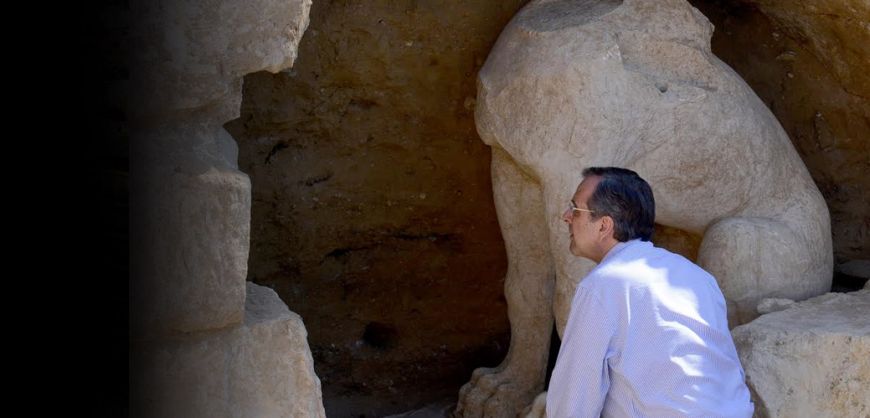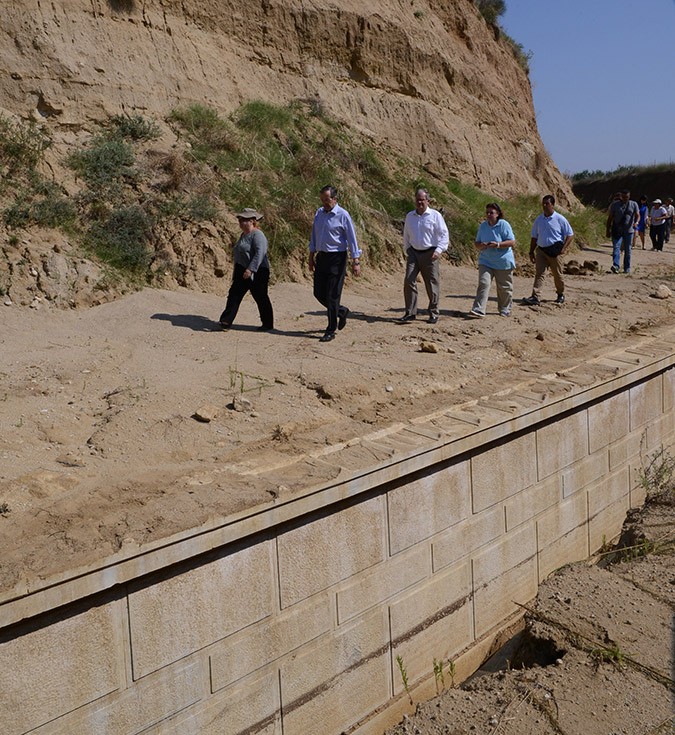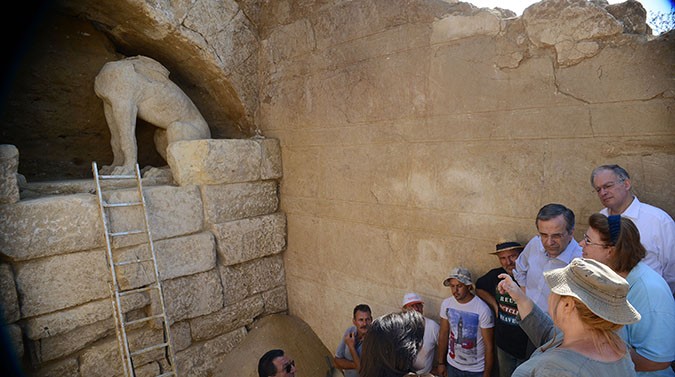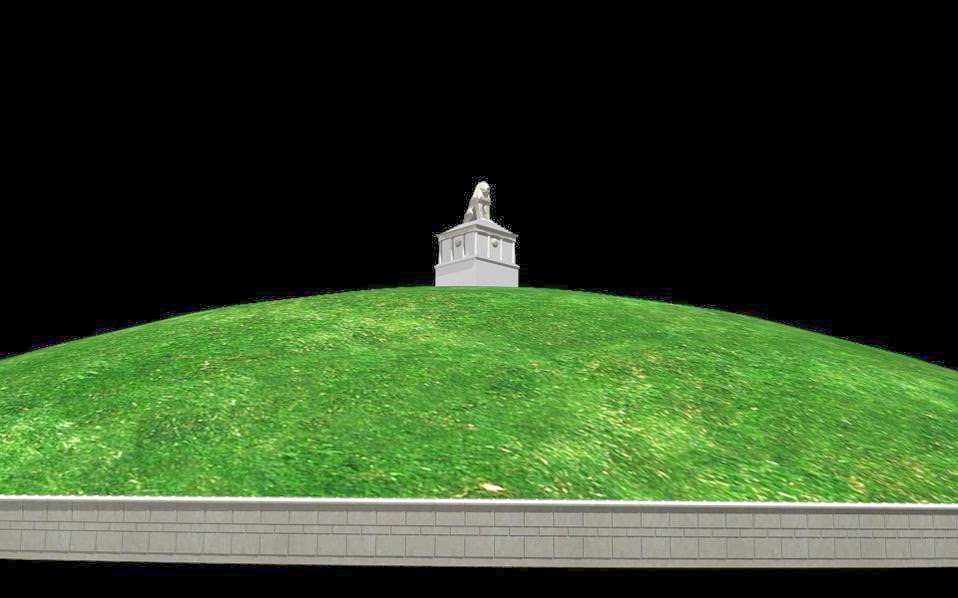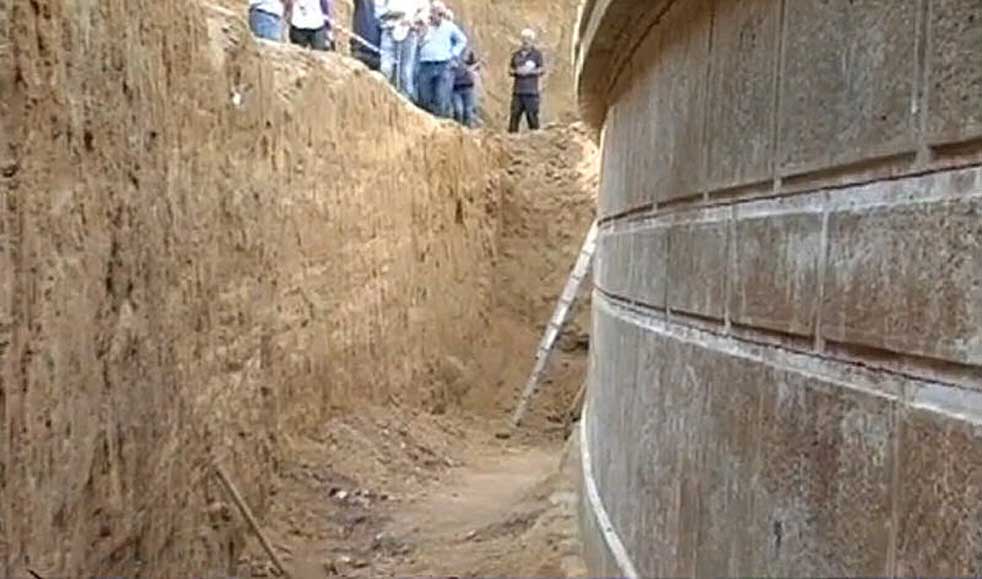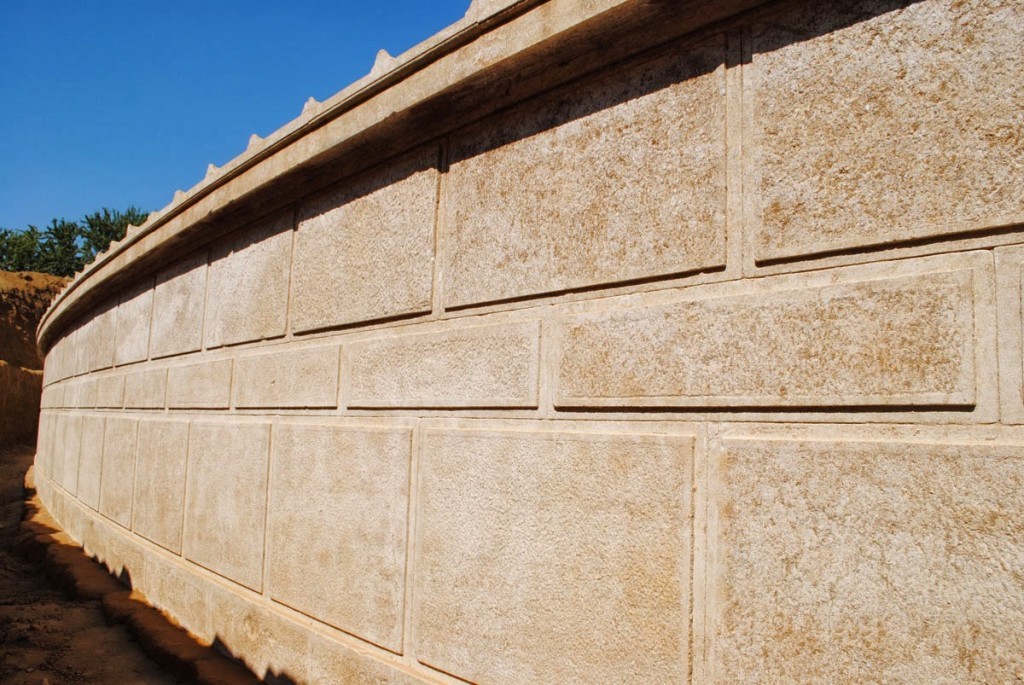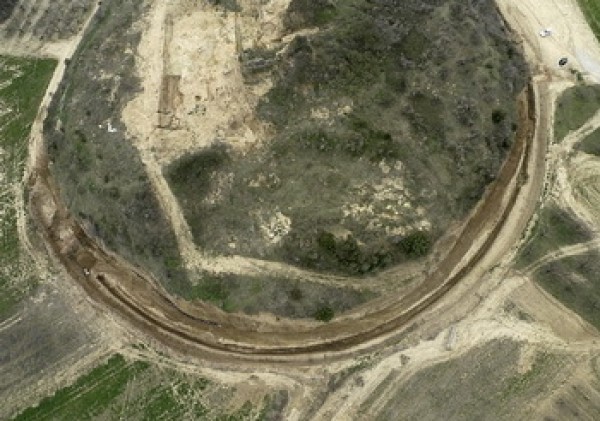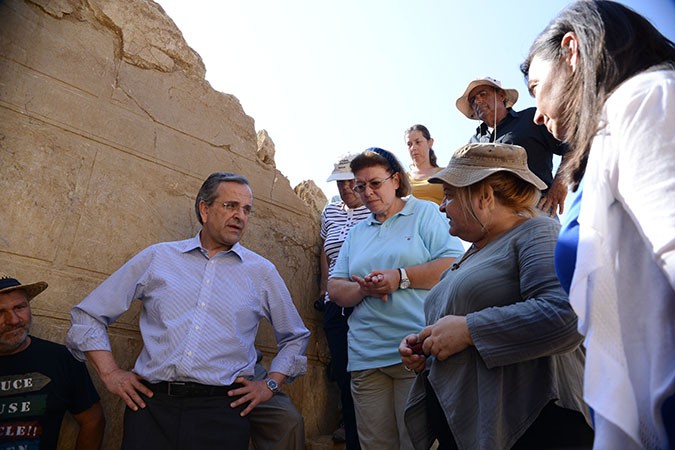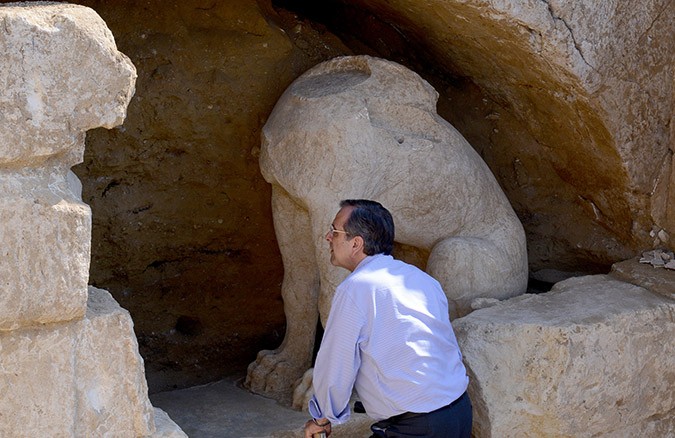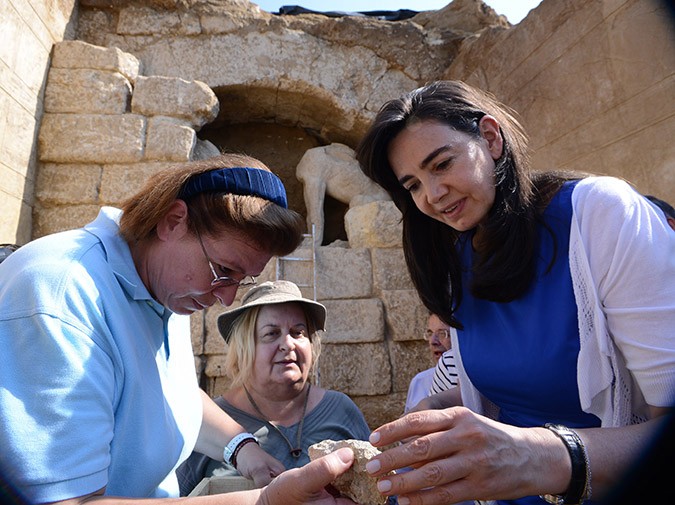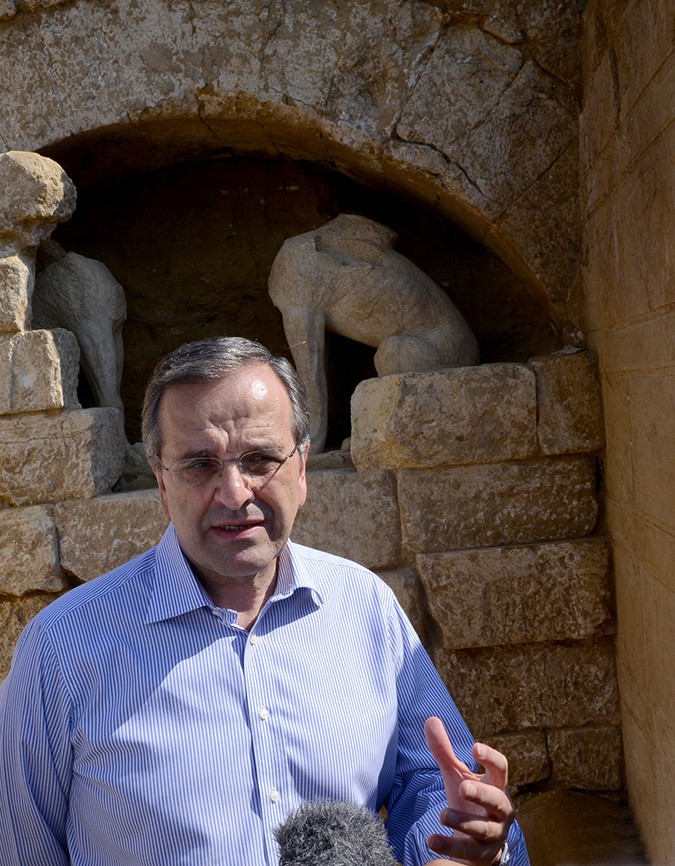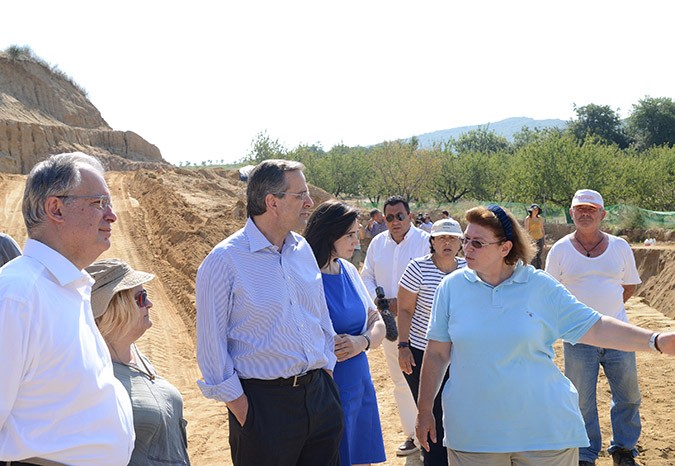Prime Minister Antonis Samaras, accompanied by his wife Georgia and Culture Minister Constantinos Tassoulas, visited on Tuesday morning the excavation site of Ancient Amphipolis, in the northern Greek region of Serres, amid rumors that archaeologists are on the verge of making a discovery as to who an impressive burial mound in the region belongs to.
The premier briefly met with locals at the site’s canteen and urged them to “be patient for a few days.”
Samaras then visited the Kasta Tomb and was guided through the excavation site by the archaeologist in charge Katerina Peristeri who briefed him on the findings.
“It is clear that we stand before an extremely important finding, The land of Macedonia continues to surprise us revealing unique treasures that weave the unique mosaic or our Greek history,” said the Prime Minister.
“This is a monument with unique features: A surrounding perivolos of 497 meters, almost a perfect circle carved in Thassos marble. The Lion of Amphipolis is around 5.20 meter high,” Mr. Samaras said and also referred to the two Sphinxes that seem to be guarding the wide path that leads to the tomb entrance.
“I believe all these findings have allowed archaeologist Katerina Peristeri to be optimistic that this is a unique burial monument, which –as she said- dates between 325 and 300 BC. The excavation will reveal the identity of the deceased. The excavation will continue at a pace dictated by the finding as well as the scientific ethics,” Mr. Samaras added.
Amphipolis Mayor Konstandinos Melitos said that the visit by the prime minister indicates that something of great magnitude has been noted in the area, adding that “the world will soon know all the region and the whole of Greece.”
Guards have been posted outside the excavation site round the clock, further fuelling speculation about the person buried there.
All data suggests that an important archaeological discovery is about to be announced. According to various sources an important tomb is about to be revealed. Findings so far – presented in March by the head of 28th Ephorate of Prehistoric and Classical Antiquities Katerina Peristeri during the 27th archaeological scientific meeting – excavations during the past two years at Casta hill have revealed a unique grave circle which dates back to the last quarter of the 4th century BC.
Funding of 100,000 euros were allocated to the site by the Ministry of Culture for the completion of the excavation of the marble-faced wall. It was built with Thassian marble that was brought to the area with special ships and marble domes from Aliki of Thassos were placed with special cranes, made of wood, iron and lead. Traces of these were found in the area, however portions of the perimeter wall appear to have been removed during Roman times.
Some of the missing portions were found at the area of the Lion monument of Amphipolis, causing archaeologists to believe that the structure may be linked to the Amphipolis Lion. Many believe that it was placed at the highest point of the mount.
When the site was first excavated, experts believed that the remains of a king or at least a very important royal Macedonian were buried here. The pyramid-shaped mound is 498 meters long and three meters high, ten times larger than the tome of Alexander’s father, Philip II of Macedon.

